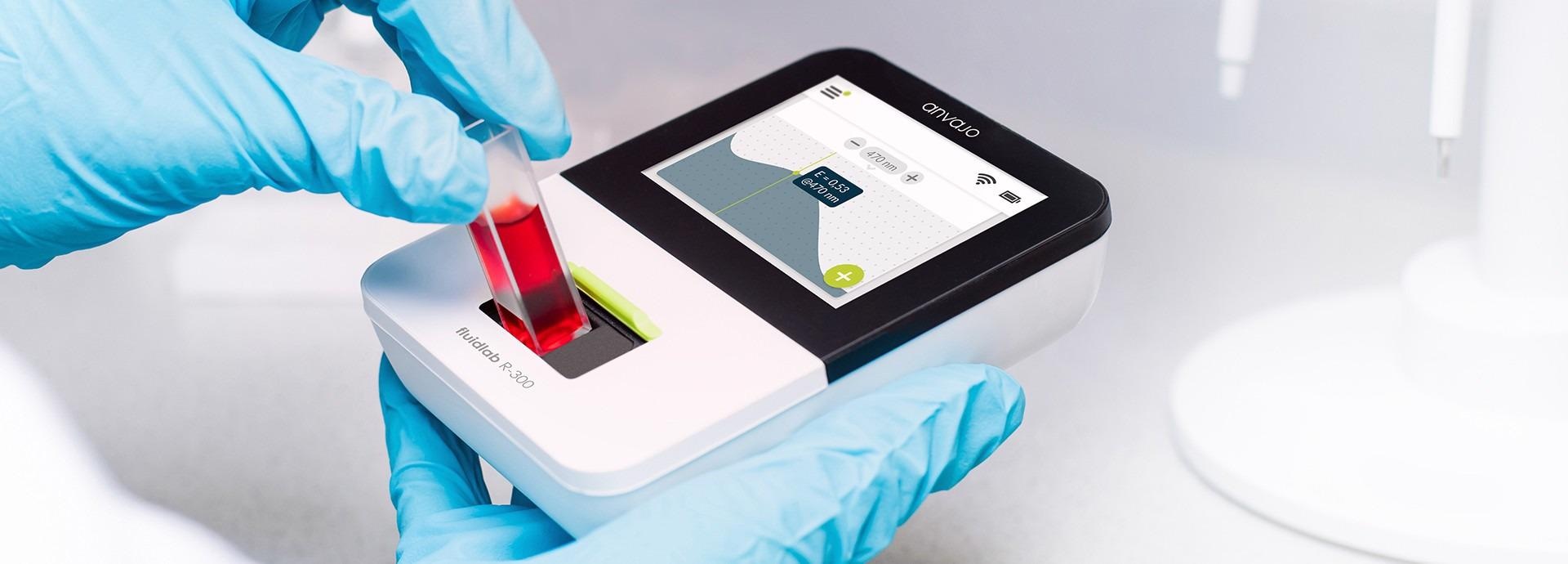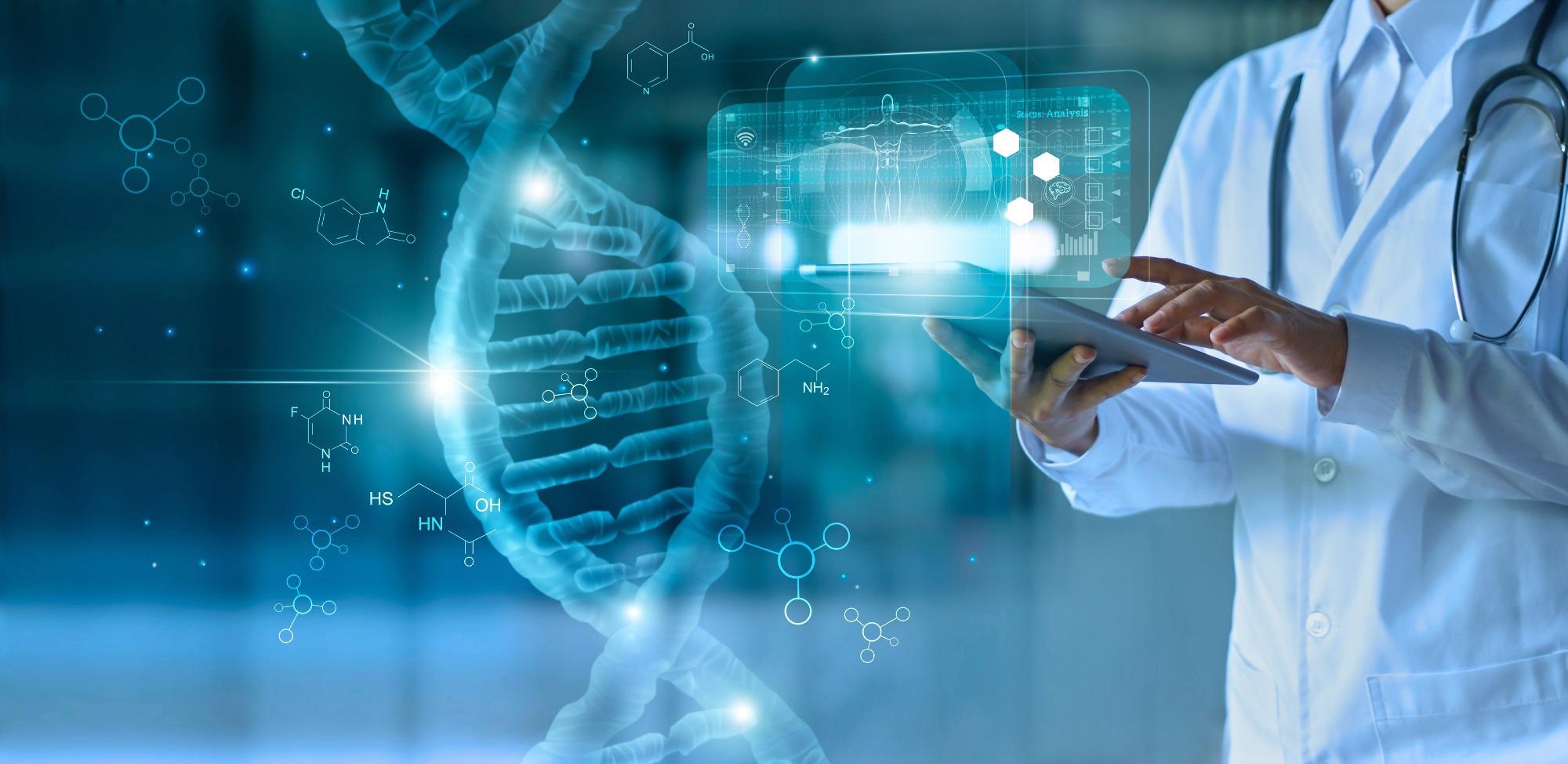Produced in Partnership with anvajoJan 11 2022
In this interview, we speak to David Heinz from anvajo about their fluidlab technology that combines cell counting and spectrometry to improve fluid analysis within disease detection.
Please could you introduce yourself and tell us about your role at anvajo?
My name is David Heinz, and I have been with anvajo for two years now.
For most of this time, I have been active in our biotech business unit. Together with our team, we built the unit up from scratch, starting with the launch of our first research product in May 2020. Since mid-2021, I have been leading our biotech unit, bringing together product development, marketing, sales, and business development to scale our existing business as well as to pave the way for our future research and biopharma products.
What are some of the missions at anvajo and how are you trying to achieve them?
Our overarching mission at anvajo is to “Detect diseases. Truly point-of-care” by “providing a platform for truly accessible, user centric lab testing for everyone, everywhere”.
In easy words – we are leveraging our distinctive optics to analyze fluids, cells, and other objects.
Therefore, we have managed to combine different technologies such as spectrometry and (digital) holographic microscopy on one portable platform. Complementing these platforms with different sample carriers and software suites enables us to provide a variety of tests for different applications in diagnostics and research based on the very same product platform.

Image Credit: anvajo
What do you believe are some of the biggest challenges faced in fluid analysis currently and how is anvajo trying to overcome them?
Looking at the global health and pharma systems as well as the daily work in most research laboratories, we experience different challenges:
- There is certainly a shortage of skilled (lab) personnel.
- Moreover, high costs in production processes put pressure on production and R&D budgets.
- Also, in different biopharma fields, calls for more decentralization are getting louder.
What we therefore need are:
- Intuitive and easy-to-use devices that can be operated by more or less everyone.
- Cost-effective solutions that bring down investment and running costs in research, production, and diagnostics (e.g. by combining different applications on the same devices or by providing technologies that help to increase efficiency in bioproduction).
- Portable devices with a smaller footprint to be used in decentralized research, production, or healthcare facilities.
You are currently working on your “fluidlab” platform which is the world's most compact universal platform for fluid analysis. Can you tell us more about fluidlab and how it works?
Our fluidlab R-300 (which is based on the same platform as our veterinary urine microscopy analyzer), combines a full-fledged spectrometer with a digital holographic microscope. This allows the users to perform different types of tests with the very same portable device.
Let me explain the secret behind that in more detail:
Our founder, Stefan Fraedrich, has an engineering background, being more than familiar with optical sensors after his time at the Technical University Dresden and the University of Trondheim. Over the years, we have built up fundamental knowledge in how to miniaturize optical setups like our spectrometer, always adhering to the highest quality and accuracy standards.
Also, our cell analysis applications are based on algorithmic enhanced optical systems. Using digital holographic microscopy allows us to keep the optical hardware components to a minimum and rely on the utilization of our advanced deep learning algorithms.
Introduction to the fluidlab R-300
What applications can your fluidlab platform be used in?
The technology explained allows users to perform a variety of spectrometric analyses such as.
- Colorimetric and turbidimetric assays, e.g. for OD600 measurements.
- Reaction kinetics e.g. for enzymatic reactions.
- Creation and utilization of calibration curves, e.g. for biuret or Bradford assays.
The build-in cell counter comes with the probably most innovative feature of the fluidlab R-300:
- The staining-free viability measurement. Users can determine the number of living and dead cells in their samples without adding additional dyes such as trypan blue.
What are the advantages of using fluidlab compared to other fluid analysis solutions commercially available?
For me, the biggest advantage is the possibility to determine the cell viability staining free. Staining reagents such as trypan blue not only require an additional step during the sample preparation, but they are also cytotoxic – meaning that at some point your cells will start dying due to the reagent. In this case, your sample does not mimic the original state of your culture anymore.
Furthermore, other reagents that might be needed for certain experiments can interfere with the dyes used to stain your cells, making the analysis even more difficult.
In addition to that, most of our customers highlight the very intuitive handling and the small footprint of the device. Especially when comparing the fluidlab R-300 to other spectrometers you can save a lot of lab space.
In summary, having all of these applications combined in a portable device that can also be used directly under the hood or bench and that delivers very accurate results simply increases the convenience for every lab researcher.
How accurate and reliable is the fluidlab platform?
Both the spectrometer as well as the cell counter provide the highest accuracy.
The spectrometer shows an extinction tolerance of max. 1% (US Pharmacopeia 857 allows a maximum of 2%), standard deviations of < 0.5%, and a very high linearity with an R² of 0.999.
The cell counter provides highly linear results covering a large concentration range (1 x 104 – 1 x 107 cells/mL) with an R² of >0.995.
Biotechnology is one of the biggest up-and-coming sectors within science. What involvement do you have within biotechnology and how do you see this sector changing over the next 10 years?
With our fluidlab, we have started the journey in the research and academia segment of biotechnology and biopharma. Looking at fields like infectious diseases, oncology, and immunology, we expect that more and more regulatory requirements from biopharma will be incorporated into the research field – simply to reduce the translation barrier from research to bioproduction. With that, the requirements for lab devices will also become stricter.
We will therefore adapt our future products e.g. in adherence with GMP regulations. Furthermore, we know that our technology, especially digital holographic microscopy, bears significant advantages in up-and downstream processes in several advanced therapy medicinal products (ATMPs), driving efficiency and thus lowering manufacturing costs.
 Image Credit: PopTika/Shutterstock.com
Image Credit: PopTika/Shutterstock.com
Do you believe that as science advances, more people will turn to technology that combines different techniques to help simplify and speed up their research?
Absolutely! As long the combination of different techniques on one product provides a more comprehensive result, it makes lab processes easier thus accelerating research processes and bringing down investment costs. I can see more people valuing such multi-applicable devices.
Of course, the adaption and penetration always depend on the specific use case.
Have you got any exciting upcoming projects at anvajo? If so, what are they?
In the biotech unit, as I said, we are in the very early phase of developing a solution for cell and gene therapy production. The first results look very promising!
With our veterinary unit, we leverage our knowledge in urine microscopy to specialize and expand even more into this field.
At anvajo health, we are developing a market-disrupting analytical solution for the screening and monitoring of chronic kidney diseases (CKD).
Where can readers find more information?
The most recent information about our fluidlab R-300 can be found on our website under: anvajo.com/solutions/fluidlab-r300
The vet fluidlab is presented under: anvajo.com/solutions/vet-fluidlab-one
First insights into our health solution can be found at: anvajo.com/solutions/health-fluidlab
And of course, our team is always eager to help and can be reached at [email protected]
About David Heinz
With several academic experiences, amongst others at Copenhagen Business School (CBS), David Heinz graduated from HHL Graduate School of Management, one of the top business schools in Germany. After having worked in project management and controlling, he joined anvajo in 2020, familiarizing himself with basic knowledge in urine microscopy and cell biology..jpg)
Today, he is head of business unit biotech at anvajo and is obtaining a Ph.D. in social entrepreneurship.
About anvajo
anvajo GmbH is a Dresden-based biotech company that develops, manufactures, and sells innovative solutions for the analysis of liquids.
The company has been developing point-of-care solutions for fluid analysis and diagnostic testing since 2016 with the vision of becoming the world's most compact universal platform for fluid lab testing.